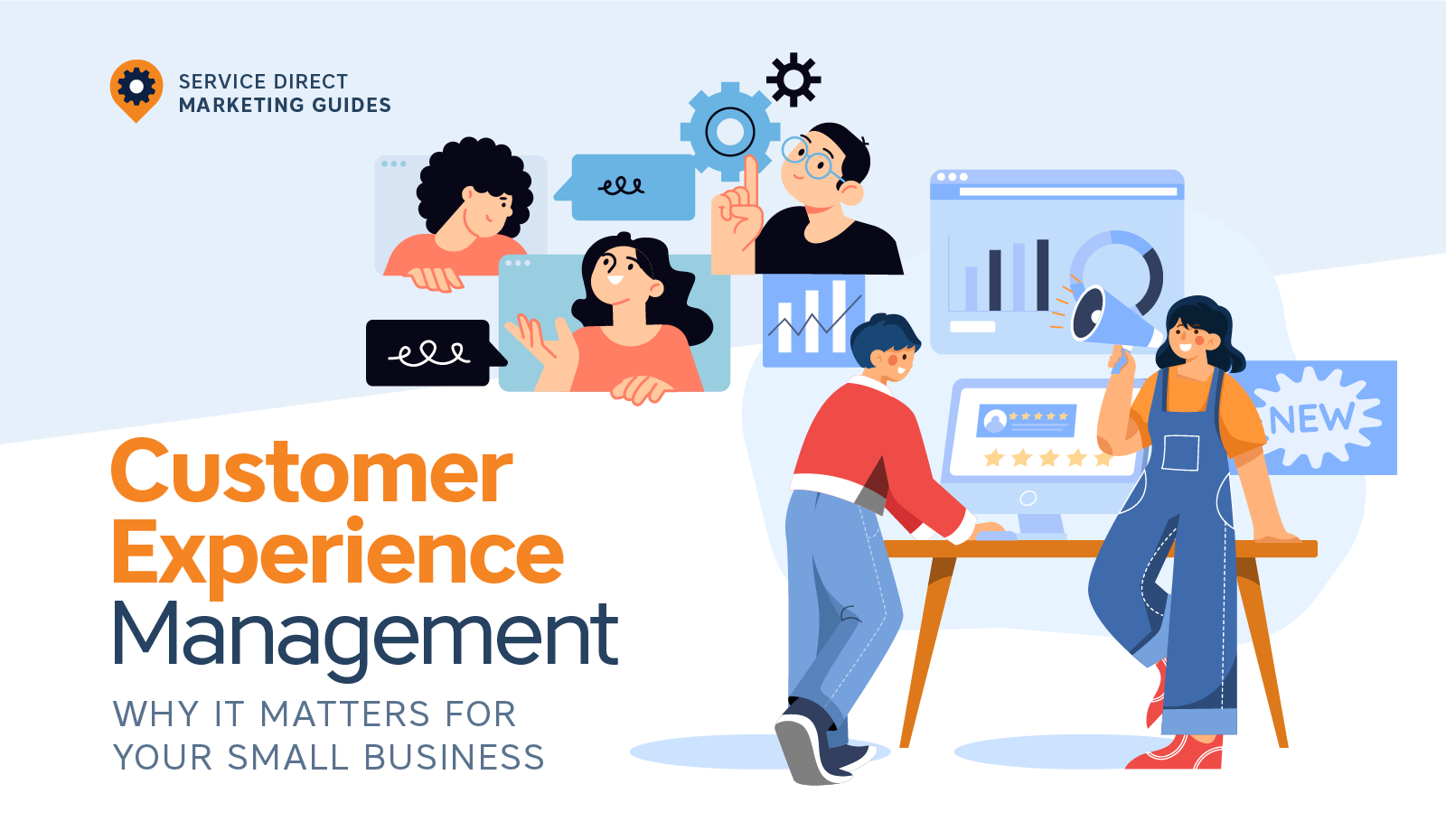Customer Experience Management: What It Is and Why It Matters
“A customer is the most important visitor on our premises; he is not dependent on us. We are dependent on him.”
- Mahatma Gandhi
Picture this: someone wakes up to a flooded kitchen, a dead AC in July, a blown circuit, or mold creeping up their wall. At that moment, they’re not shopping around for coupons—they’re looking for the business that responds first, communicates clearly, and makes life easier.
That’s Customer Experience Management (CXM) in action. And in 2025, it’s the biggest factor separating home service companies that grow effortlessly from those scrambling for every job.
Let’s break it down in everyday language.
What is Customer Experience Management?
Customer experience management (CXM) is the process of managing every touch point between your small business and a customer. It includes everything from product design and delivery to customer service, loyalty programs, and more.
Customer Experience Management is how customers feel before, during, and after they hire you. It’s not just doing the job correctly. It’s how you:
- Answer the phone
- Explain the diagnosis
- Communicate pricing
- Arrive when you say you will
- Follow up after the work is done
If marketing gets the phone to ring, CXM is what makes a customer choose you again—and tell their neighbors to call too.
Ultimately, CXM is used to improve your customer service, build and strengthen relationships with customers, and boost your brand loyalty. It can also help you create new products or automations that are tailored to the needs of your target market.
Customer Experience vs. Customer Service
It’s important to note that customer experience management is different from customer service. Traditional customer service is reactive and focuses on the past, while customer experience is proactive and focuses on the future.
Customer service is what happens when a customer has an issue with your product or service. This can be anything from returning an item to filing a complaint with customer support.
Customer experience, on the other hand, encompasses all of the interactions your customers have with your brand—from the first time they hear about you to the last. It's about how they feel about your company, whether it be through a sales call, email communication, social media ad, or proactive customer support interaction.
Why CXM Matters more than ever
Today’s customers have more options than ever, and they’re choosing service providers the same way they choose restaurants: by who responds fastest, communicates clearly, and makes life easiest.
You could be the most skilled technician in your entire market, but if another business answers the phone quicker or explains pricing more clearly, they’ll earn the job. Customer Experience Management matters because it directly controls whether customers choose you, remember you, and recommend you.
Customers aren’t just expecting quality repairs—they expect the whole process to feel smooth:
- Fast response when they reach out
- Clear communication about pricing and scheduling
- Honest expectations about timing and work
- Simple ways to book and stay updated
And in the age of online reviews, that experience doesn’t go away once the job is done. A great experience can turn into a 5-star review that lives online for years. A poor one can do the same. CXM isn’t a bonus—it’s the difference between being the first choice or being forgotten.
Improve Customer Retention
One of the biggest challenges small businesses face is keeping customers happy and coming back for more. When you're dealing with issues and complaints, it's easy to lose customers who don't feel heard or valued. At Service Direct, before we overhauled our CXM, our ‘Happy’ customer satisfaction rating was at 21% in Q1 of 2021. It doesn’t take a CXM master to see why that was a major area we wanted to improve. When we took the time to update and be proactive in as many of our customer-facing processes as possible, that rating grew to 41% in Q1 of 2022.
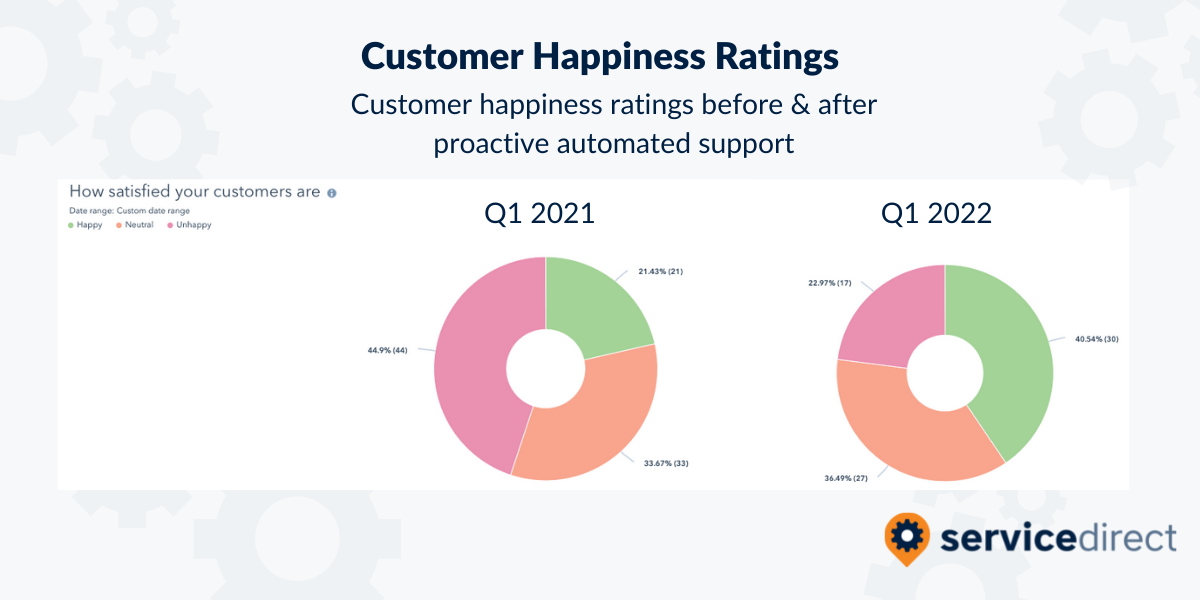
However, when you have good customer experience management strategies in place, they'll stick around—and maybe even tell their friends about it! With the right tools like the best customer service software for small business in 2022, you can ensure that your customers are happy.
Boost Customer Loyalty
When you have good customer experience management strategies in place, it will be easier to keep your customers loyal. You can provide them with the service they need when they need it. Plus, make sure they're satisfied with their interactions with your business. This will help improve brand loyalty—which means more repeat customers and less money spent on marketing.
Achieve Good Brand Reputation
Your customers are the best source of word-of-mouth recommendations. If they're satisfied with their experience and happy with your products or services, they'll tell others about it.
In fact, in a recent survey we conducted, consumers made clear just how willing they were to help spread the word about small businesses they liked.
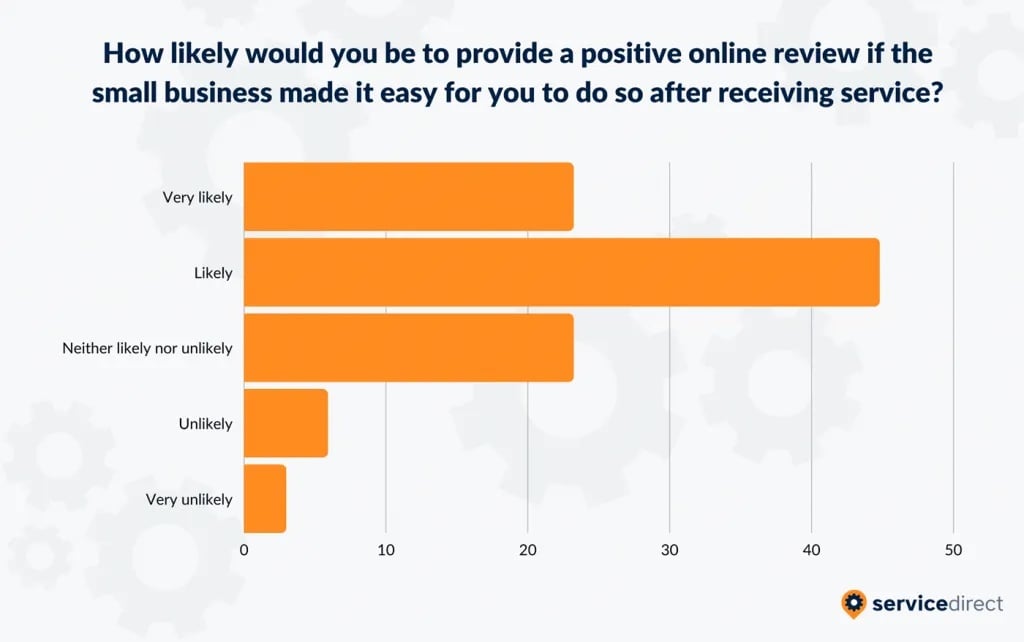
71% of customers were likely or highly likely to leave a positive online review if asked by the business and it was simply to do. Even better, 55% of customers said they were likely to respond to a friend’s online request for a recommendation for a small business.
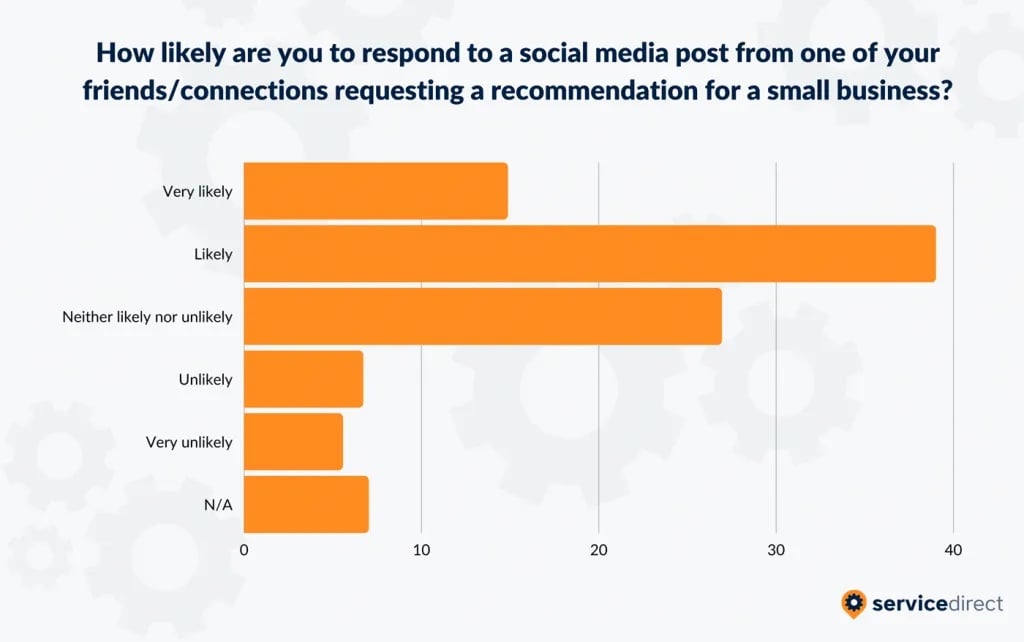
Clearly, ensuring customers’ experiences with your business matters, especially given how easy it is for people to share those experiences with others via social media and other channels. But if they aren't satisfied, they're more likely to tell their friends and family about that too—which can lead to negative reviews, bad press, and lost revenue.
Not convinced? What if we told you that word-of-mouth generates 5 times more sales than paid advertising? Or the fact that 26% of people will actively avoid a company if a someone they know shares a negative experience about the company? How about that 96% of satisfied customers will return and will be more likely to tell the people around them? We think these statistics speak for themselves, and only further drive home the need to prioritize CXM and customer satisfaction above all else.
Regardless of the size of your business, a good brand reputation will help you stand out from the competition. Customers want to do business with companies that care about their needs and wants. So, make sure your brand is one of those businesses by making sure customers are consistently delighted.
Stand Out from Competition
It's also important to make your customers' lives easier by making it easy for them to do business with you. This means providing a user-friendly website and clear, fast response times on any inquiry or issue.
Oftentimes, a website is your first impression with a potential customer. If your website isn't intuitive or visitors can't easily find what they want, their experience will be poor and they'll seek a better experience elsewhere. In other words, they'll move on to your competition.
In fact, in the consumer survey mentioned previously, we asked consumers how likely they were to patronize a small business with no website versus one with an outdated website and respondents were more likely to patronize the small business with no website.
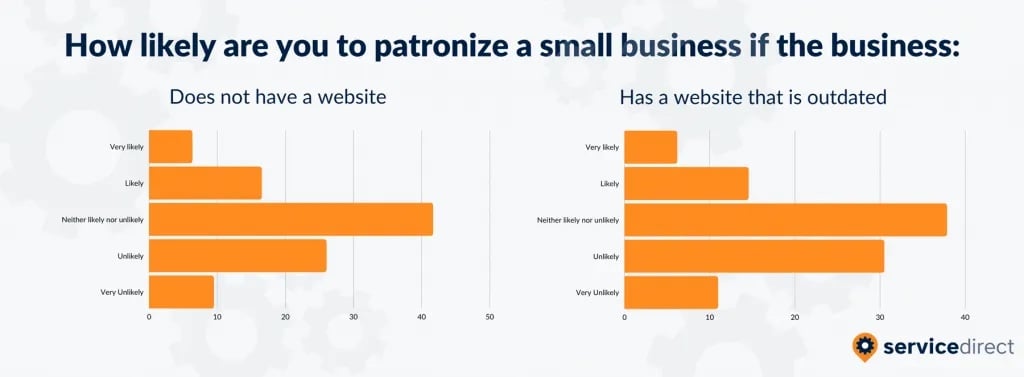
Tips to Improve Customer Experience
Surveys
One of the best ways to improve your customer experience is by conducting surveys. You can use their responses to identify areas that need improvement and then take action to fix them. Here are some tips for creating surveys that will help you improve customer experience:
- Keep it short and simple. Keep the number of questions to a minimum and make them as easy to answer as possible.
- Make it easy to complete. Don't make customers sign up for an account to take your survey. This will increase the number of responses you get and help you improve customer experience even faster.
- Have a clear purpose. Plan ahead why you're doing the survey, what kind of data you want to collect, and how you'll use it.
- Offer incentives for completing the survey. This will encourage people to take part in the survey and improve response rates.
- Offer reminders to take part in the survey. Send an email a few days before it's due so people don't forget about it when they get busy.
Personalization
Personalization is the process of delivering a more tailored experience to each customer. It's a powerful tool for improving the customer experience because it helps ensure that the right message reaches the right person at the right time. Personalization can be done in different ways, depending on the type of business you have and what your goals are. Leveraging content creation to deliver personalized messages to your targeted audience will help drive down your potential customers through the sales funnel.
For example, in email marketing, you can use email personalization to send targeted offers. If you're a retailer who wants to increase sales by cross-selling, email them similar items they've purchased in the past. The more information you have about your customers and what they like, the better your chances of personalizing their experience.
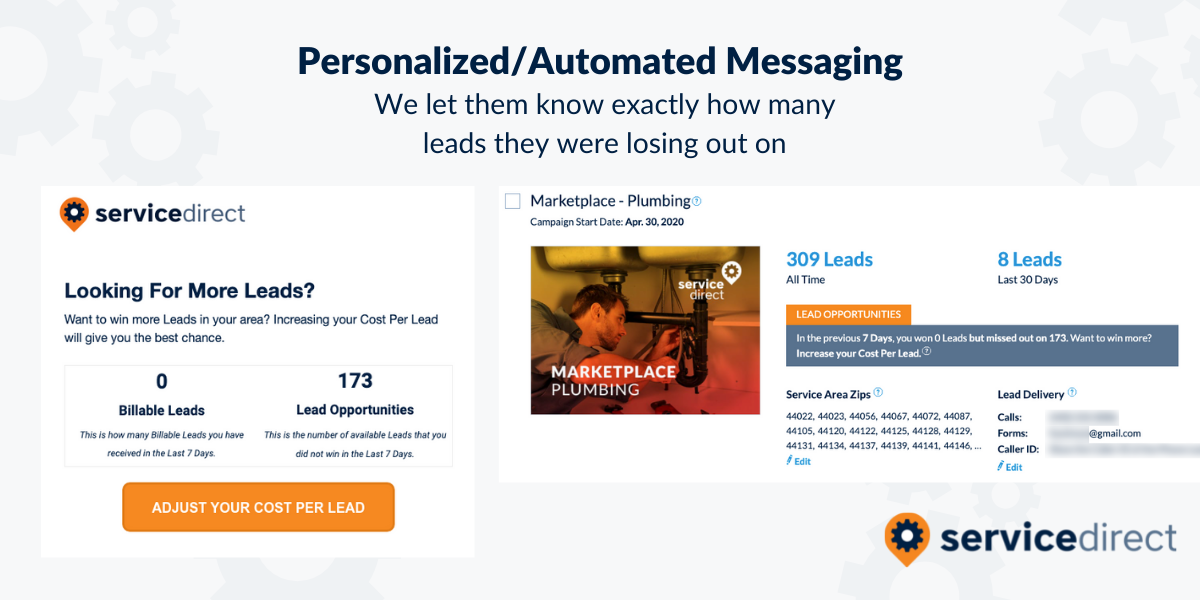
For us, we based personalization on data points we collected that we felt helped predict whether or not our customers were having a good experience. By collecting various data points, we were able to build automated and personalized communications (via both email and in-app messaging) to help our customers take actions that would improve their experience with our platform.
As an example, one major issue our customers were experiencing was they weren’t winning calls within our Marketplace because the cost per lead they chose was not competitive. So when our system recognized that a customer was not winning calls within our platform, we were able to send them personalized messaging encouraging them to increase their CPL.

The results were striking. Customers took the action we wanted them to take, which in turn allowed them to see better results with our platform. Armed with data, these personalizations had a profound impact on our clients’ happiness and results.
Customer Journey Mapping
Customer experience is about more than just the actual interaction between you and your customers. It’s about how a customer perceives the entire experience, from when they first come into contact with your brand.
The customer journey mapping tool gives you a visual representation of their experience. It lets you see where there are gaps in your strategy or solving customer problems. It also helps you understand where they are in the buying process and what steps they need to take next.
Customer Service
A good customer service strategy is an essential part of any brand. However, many businesses don’t have one in place. This is a mistake, as it can lead to an increase in customer complaints and poor brand reputation.
A customer service strategy can help you avoid this by providing a framework for improving your interactions with customers. The first step is to define your brand and communicate it clearly. This means deciding on the core values of your company, as well as the key messages that resonate with customers.
“Your brand is a story unfolding across all customer touch points.”
-Jonah Sachs, American Author and Entrepreneur
Next, create a customer service strategy that will enable you to deliver on your brand promise. This will be different across industries, but it should include clear processes for handling customer complaints and feedback.
The final step is to implement your customer service strategy. It’s essential to ensure that all of the people in your organization are working toward the same goals and objectives.
Data and Analytics
The customer experience is a key component of the digital economy. And the ability to use data and analytics for this purpose is becoming increasingly important. Businesses need to focus on creating experiences that customers will enjoy, while also solving any problems they may have. This could include providing access to information in real-time or enabling them to purchase goods without leaving their homes.
Businesses also need to do a better job of measuring the customer experience and using this data to improve it. Customers are more likely to make repeat purchases if they have positive interactions with your brand. Thus, it’s important to track how often they purchase from you and what their reactions are after doing so.
This was a large part of our CXM overhaul, as we collected 89 data points (and growing as we find more customer behaviors we want to track!) of client health data to help us understand where we were succeeding and where we needed to improve. This data was ultimately crucial in improving the overall customer experience for our clients.
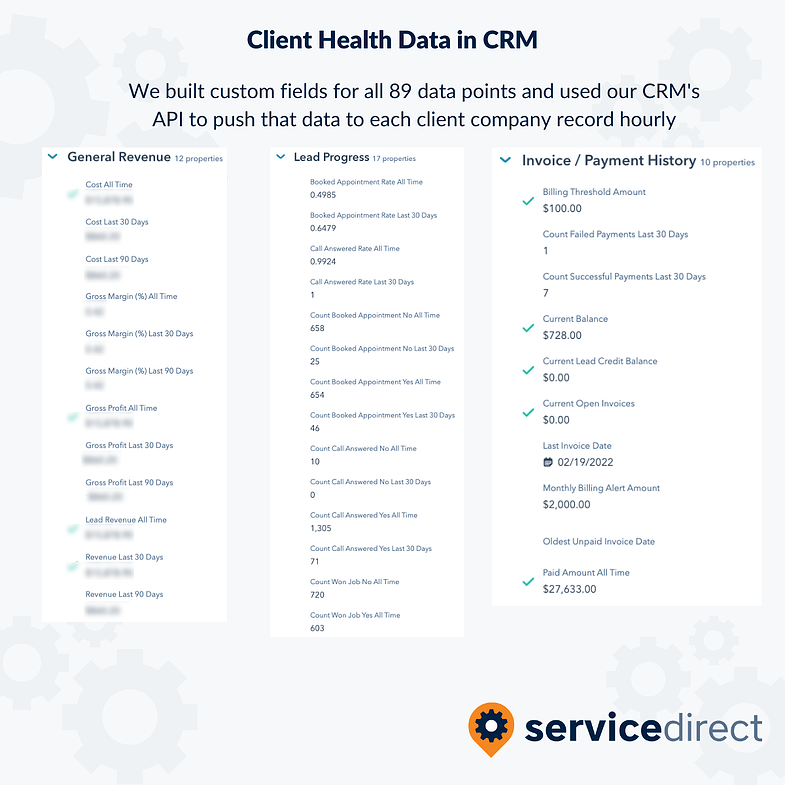
Employee Empowerment
For companies to provide a positive customer experience, employees must feel empowered to act without hesitation. This means giving them the tools they need to do their jobs effectively and efficiently. Plus, providing training is equally important so employees can learn how to use those tools properly and professionally.
This is particularly important in retail, where customers are often in a hurry and frustrated by long lines. If an employee can use technology to quickly check out a customer, the customers are more likely to be happy.
Investing in CXM Systems
Checking out Zendesk reviews and the like before investing in CXM systems is a smart move for small businesses. It can help you meet the needs of customers, reduce your costs, and improve your bottom line. You’ll be able to attract new customers and retain existing ones by providing them with a better shopping experience.
Customer experience management systems allow you to improve efficiency and convenience in a variety of ways. It can help you reduce wait times, shorten lines, free up staff and improve customer satisfaction. It also gives you the ability to provide customers with the information they need before they even ask for it. When you invest in CXM systems, you give yourself an edge over competitors who don’t have them in place yet.
Achieve Success by Investing in Customer Experiences
Customer experience is everything. It’s not just about making your customers happy—it’s about making them feel like they matter. After all, the goal of any business is to create loyal customers who will return again and again.
This means having the right people in place. Make sure that your employees know what they’re doing and why, and consistently deliver high-quality products and services. It also means being proactive about customer complaints so that you can resolve issues before they get out of hand.
It doesn’t matter if customers have been with your company for years or whether this is their first time visiting—they should always leave feeling like they were taken care of. By investing in customer experience management, your company can increase customer loyalty, as well as improve revenue streams.
Author's Note: This blog was originally published in September 2022 and has been updated to reflect current trends and data.

